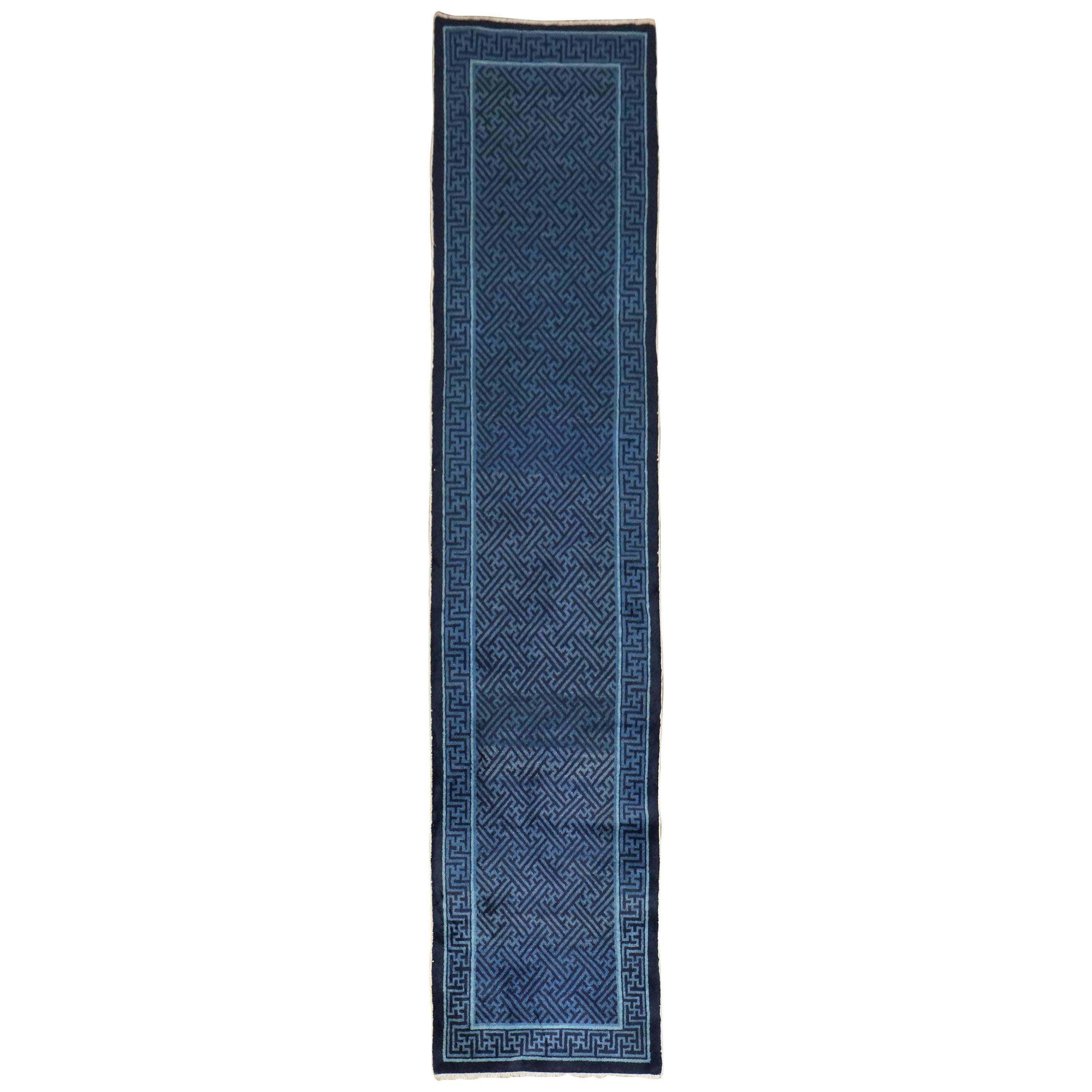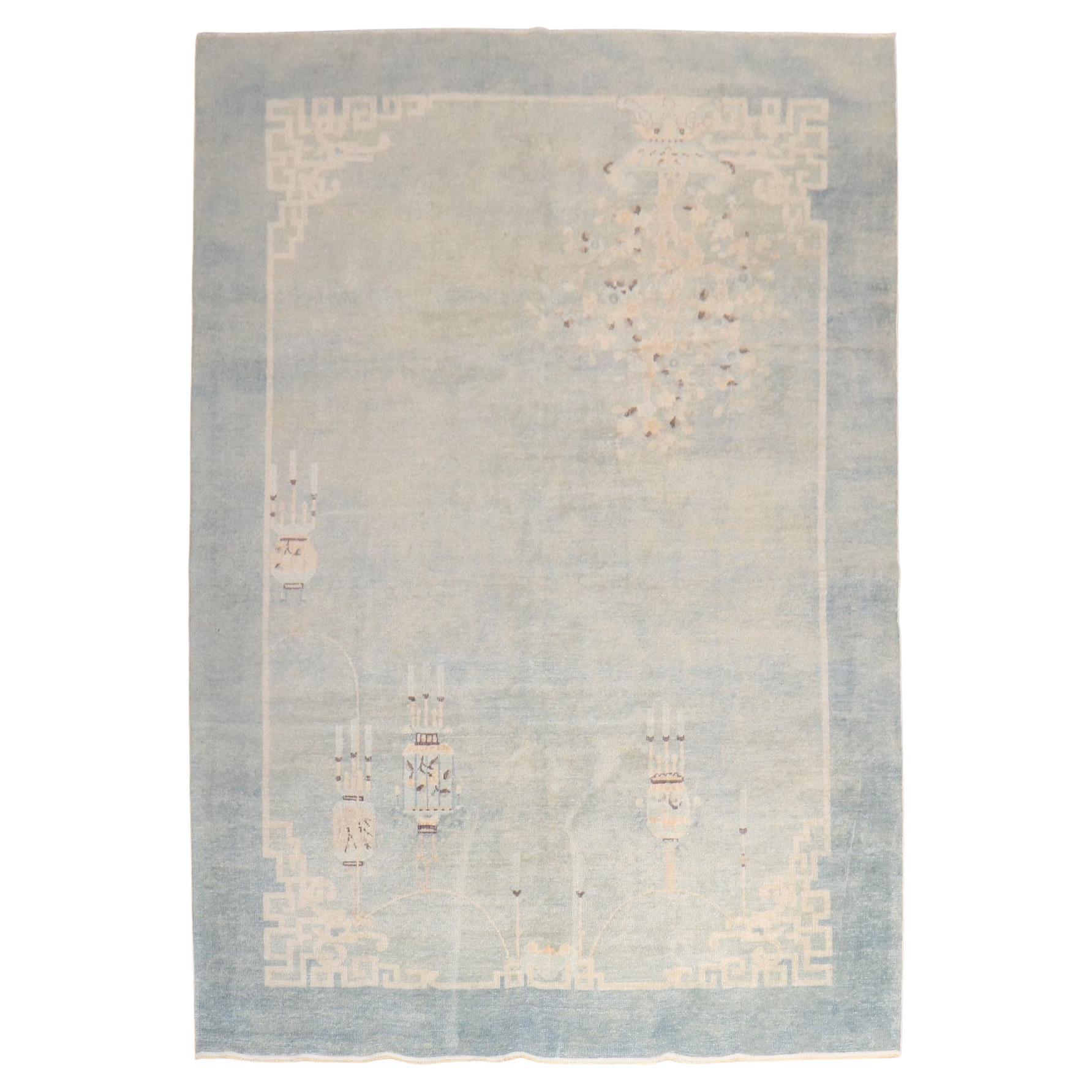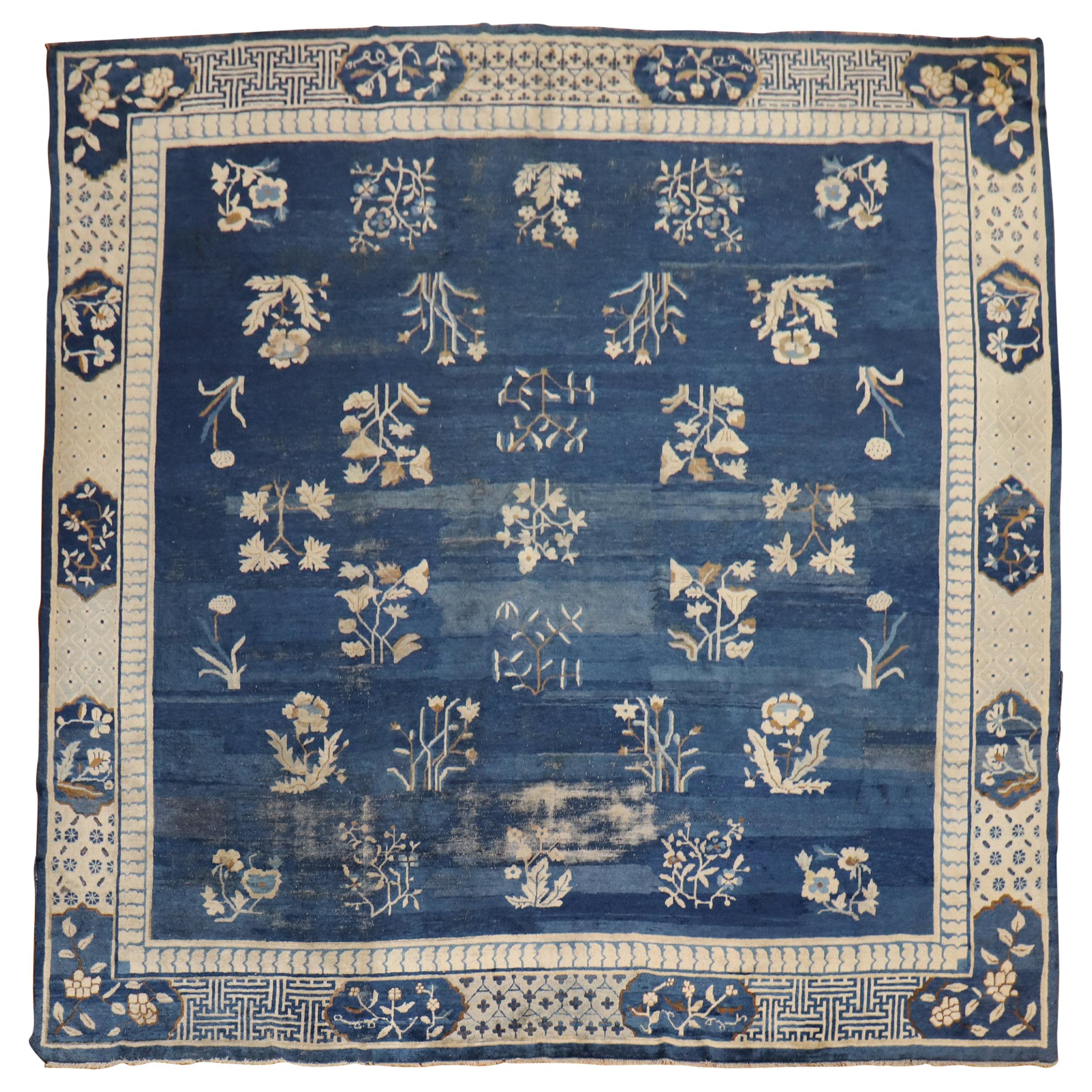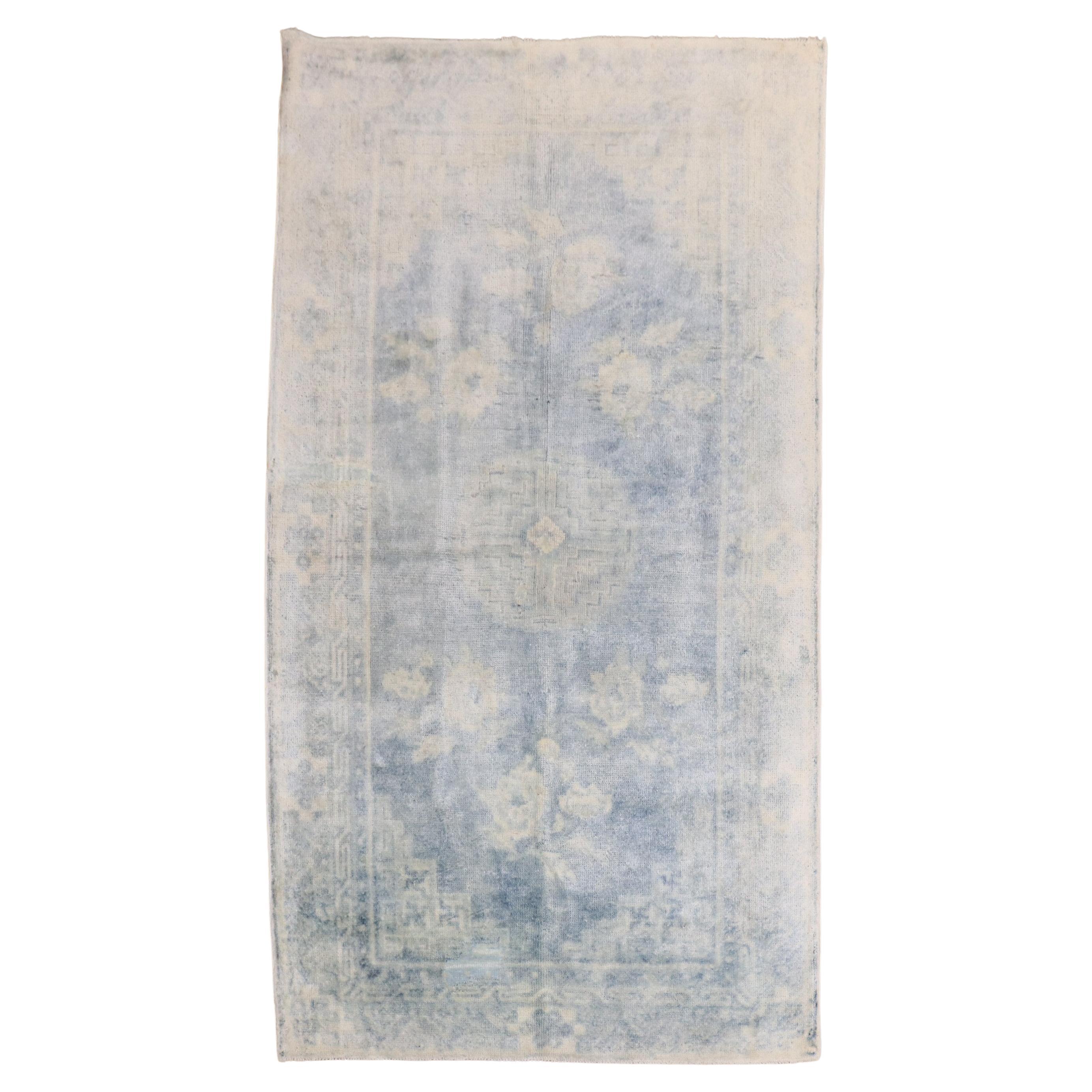Items Similar to Long Beige Blue Chinese Runner, Early-20th Century
Want more images or videos?
Request additional images or videos from the seller
1 of 10
Long Beige Blue Chinese Runner, Early-20th Century
About the Item
Long 1920s Chinese runner with a solid open field design with floral motifs in beige with a lovely floral border in navy and light blue. Excellent condition.
Measures: 3' x 19'3".
- Dimensions:Width: 36 in (91.44 cm)Length: 231 in (586.74 cm)
- Style:Rancho Monterey (In the Style Of)
- Materials and Techniques:Wool,Hand-Woven
- Place of Origin:
- Period:
- Date of Manufacture:circa 1920
- Condition:Wear consistent with age and use.
- Seller Location:New York, NY
- Reference Number:
About the Seller
5.0
Platinum Seller
These expertly vetted sellers are 1stDibs' most experienced sellers and are rated highest by our customers.
Established in 1975
1stDibs seller since 2011
1,414 sales on 1stDibs
Typical response time: <1 hour
- ShippingRetrieving quote...Ships From: New York, NY
- Return PolicyA return for this item may be initiated within 3 days of delivery.
More From This SellerView All
- Blue Chinese Runner, Mid-20th CenturyLocated in New York, NYRare blue 2-tone Chinese narrow runner from the middle of the 20th century. Repetitive Design in field and border. The condition is excellent Measures: 2'4" x 9'5".Category
20th Century Chinese Mid-Century Modern Chinese and East Asian Rugs
MaterialsWool
- Pale Blue Early 20th Century Chinese RugLocated in New York, NYAn early 20th century Chinese run in the palest of blues Measures: 6'1'' x 9'.Category
Early 20th Century Chinese Mid-Century Modern Chinese and East Asian Rugs
MaterialsWool
- Blue Early 20th Century Large Chinese Square RugLocated in New York, NYA rare 11-foot square early 20th-century shabby chic weather textured Chinese rug with a graphic floral Motif in denim blue, accents in white, and...Category
Early 20th Century Chinese Chinoiserie Chinese and East Asian Rugs
MaterialsWool
- Zabihi Collection Pale Blue Early 20th Century Chinese RugLocated in New York, NYAn early 20th-century Chinese run in the palest blue color Measures: 2'11'' x 5'.Category
Early 20th Century Chinese Mid-Century Modern Chinese and East Asian Rugs
MaterialsWool
- 19th Century Long Antique Chinese RunnerLocated in New York, NYLate 19th century narrow and long Chinese Runner Measures: 2'5'' x 14'5".Category
Antique Late 19th Century Chinese Chinoiserie Chinese and East Asian Rugs
MaterialsWool
- Dragon Blue Chinese Rug, Mid-20th CenturyLocated in New York, NYA full pile 20th century Chinese rug with 4 dragons floating on a navy blue ground. Measures: 4'1" x 6'1".Category
Mid-20th Century Tibetan Expressionist Chinese and East Asian Rugs
MaterialsWool
You May Also Like
- Early 20th Century Handmade East Turkestan Pomegranate Khotan RunnerLocated in New York, NYAn antique East Turkestan Khotan rug in runner format with a pomegranate design handmade during the mid-20th century. Measures: 2' 2" x 7' 6" Central Asian Rugs & Carpets: Central Asia is a vast area stretching from Northeastern Persia to western China, and from northern Afghanistan to the southern edge of Russia. The carpets can be usefully divided into three groups: the nomadic Turkmen rugs of Turkmenistan, northern Afghanistan, and northeastern Persia; the non-Turkmen tribal pieces from Kazakhstan, Uzbekistan, and Kirghizstan; and the urban creations of Khotan, Yarkand, and Kashgar, oasis cities of Western China (Xinjiang Province). Commercially, the most important group is from Khotan, the easternmost of the Chinese Turkestan cities. The craft of rug weaving is primarily in the hands of Muslim Uighurs. Khotan carpets mix purely Central Asian design themes with Chinese elements. Native Khotan devices include pomegranate trees, upright flowers, round medallions, and yellow or red grounds. Chinese motives include triangular fretwork corners, swastika fretwork, and Yun-Tsao Tou (clouds and rain) diagonally striped polychrome borders. Cotton foundations, asymmetrical (Persian) knots, and medium weaves are standard. Some vintage Khotan are in horizontal, pictorial layouts with multiple various vases and plants. Saphs (multiple prayer niche panel carpets) are also a Khotan specialty. Others employ stepped and layered lozenge medallions, singly or in pairs. Still others, almost all antique, feature a stylized version of the allover Persian Herati design. Many of the oldest pieces employ brown wool wefts. Antique and vintage Khotans are almost always in the k’ang (double square) layout, conforming to the local household plans. Only relatively recently has the 6’ by 12’ or 7’ by 16’ format been replaced by the 9’ by 12’ size. As a result, an antique room size Khotan carpet is very uncommon. Reds are cinnamon, tomato and rust, never wine reds, crimson, or scarlet. Yarkand, farther west on the old Silk Road specializes in multi-medallion long carpets while Kashgar, farthest west and most under Persian influence, has traditionally knotted allover pattern pieces with finer weaves, often with silk piles, and enriched with medal thread, on cotton foundations. Extant Kashgars go back to the 17th century, but the carpet craft in Chinese Turkestan must be much older as fragments have been recovered from local tombs of the early C.E. period. Kashgars are the rarest of all East Turkestan rugs. Most available vintage East Turkestan carpets are interwar Khotans, many with pleasingly soft decorative palettes. The non-Turkmen nomads include the Kazakh, Kirghiz, Uzbek, and Karakalpak groups. Like the Turkmen, they were once all seasonally migratory, dwelling in round felt tents (yurts), but have been settled, at least partially, in the villages, and have taken up crafts and agriculture instead of sheep herding. As a result, carpet production has transitioned from domestic tent use to commercial sale, but the roots of long traditions are still evident. The Uzbeks weave...Category
Early 20th Century East Turkestani Modern Central Asian Rugs
MaterialsWool
- Early 20th Century Handmade East Turkestan Saph Khotan RunnerLocated in New York, NYAn antique East Turkestan Saph Khotan rug in runner format handmade during the early 20th century. Measures: 2' 2" x 9' 3" Central Asian Rugs & Carpets: Central Asia is a vast area stretching from Northeastern Persia to western China, and from northern Afghanistan to the southern edge of Russia. The carpets can be usefully divided into three groups: the nomadic Turkmen rugs of Turkmenistan, northern Afghanistan, and northeastern Persia; the non-Turkmen tribal pieces from Kazakhstan, Uzbekistan, and Kirghizstan; and the urban creations of Khotan, Yarkand, and Kashgar, oasis cities of Western China (Xinjiang Province). Commercially, the most important group is from Khotan, the easternmost of the Chinese Turkestan cities. The craft of rug weaving is primarily in the hands of Muslim Uighurs. Khotan carpets mix purely Central Asian design themes with Chinese elements. Native Khotan devices include pomegranate trees, upright flowers, round medallions, and yellow or red grounds. Chinese motives include triangular fretwork corners, swastika fretwork, and Yun-Tsao Tou (clouds and rain) diagonally striped polychrome borders. Cotton foundations, asymmetrical (Persian) knots, and medium weaves are standard. Some vintage Khotan are in horizontal, pictorial layouts with multiple various vases and plants. Saphs (multiple prayer niche panel carpets) are also a Khotan specialty. Others employ stepped and layered lozenge medallions, singly or in pairs. Still others, almost all antique, feature a stylized version of the allover Persian Herati design. Many of the oldest pieces employ brown wool wefts. Antique and vintage Khotans are almost always in the k’ang (double square) layout, conforming to the local household plans. Only relatively recently has the 6’ by 12’ or 7’ by 16’ format been replaced by the 9’ by 12’ size. As a result, an antique room size Khotan carpet is very uncommon. Reds are cinnamon, tomato and rust, never wine reds, crimson, or scarlet. Yarkand, farther west on the old Silk Road specializes in multi-medallion long carpets while Kashgar, farthest west and most under Persian influence, has traditionally knotted allover pattern pieces with finer weaves, often with silk piles, and enriched with medal thread, on cotton foundations. Extant Kashgars go back to the 17th century, but the carpet craft in Chinese Turkestan must be much older as fragments have been recovered from local tombs of the early C.E. period. Kashgars are the rarest of all East Turkestan rugs. Most available vintage East Turkestan carpets are interwar Khotans, many with pleasingly soft decorative palettes. The non-Turkmen nomads include the Kazakh, Kirghiz, Uzbek, and Karakalpak groups. Like the Turkmen, they were once all seasonally migratory, dwelling in round felt tents (yurts), but have been settled, at least partially, in the villages, and have taken up crafts and agriculture instead of sheep herding. As a result, carpet production has transitioned from domestic tent use to commercial sale, but the roots of long traditions are still evident. The Uzbeks weave...Category
Early 20th Century East Turkestani Folk Art Central Asian Rugs
MaterialsWool
- Extremely Rare Early 20th Century Pictorial Chinese RugLocated in Chicago, ILAn extremely rare early 20th century pictorial Chinese rug depicting Chinese scholar's objects like potted peonies and chrysanthemums, citron (Buddha's Fingers) with a censor, and a ...Category
Vintage 1920s Chinese Khotan Central Asian Rugs
MaterialsWool
- Early 20th Century Khotan RugLocated in Chicago, ILA beautiful early 20th century East Turkestan Khotan rug with several medallions with stylized flowers woven in muted colors inducing gold, crimson, pink, and brown against a coral c...Category
Vintage 1930s East Turkestani Khotan Central Asian Rugs
MaterialsWool
- Antique Khotan Rug, Early 20th CenturyLocated in San Francisco, CAAntique Khotan Rug, Early 20th Century Woven in an oasis town of the Tarim Basin in Xinjiang, a Turkic-speaking autonomous region in the far west of China, this piece is remarkably faithful to the drawing of much earlier Khotan...Category
Early 20th Century East Turkestani Central Asian Rugs
MaterialsWool
- Antique Khotan Rug, Early 20th CenturyLocated in San Francisco, CAAntique Khotan Rug, Early 20th Century Additional Information: Dimensions: 6'7" W x 13'8" L Origin: East Turkestan Period: Early 20th Century Rug ID: 10157Category
Early 20th Century East Turkestani Central Asian Rugs
MaterialsWool





